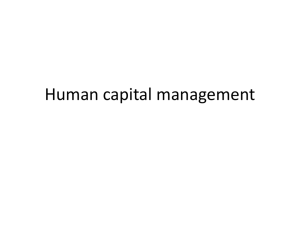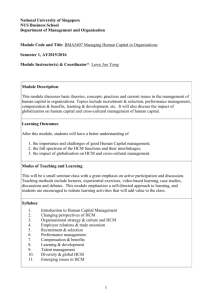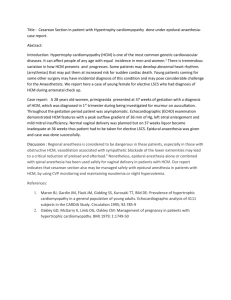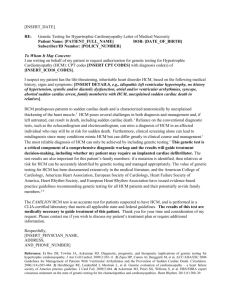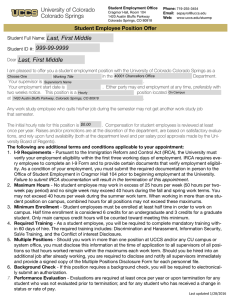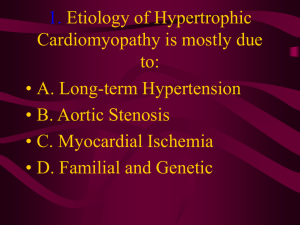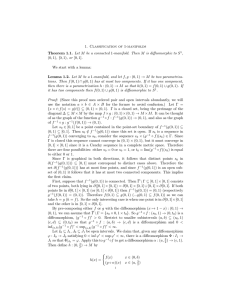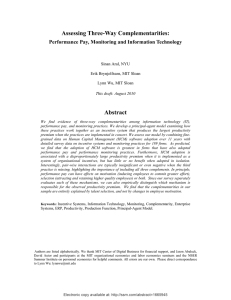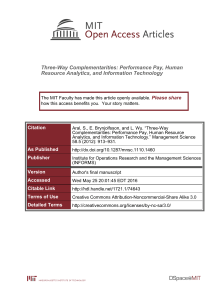LECTURE 17, 18.155, 5 NOVEMBER 2013
advertisement
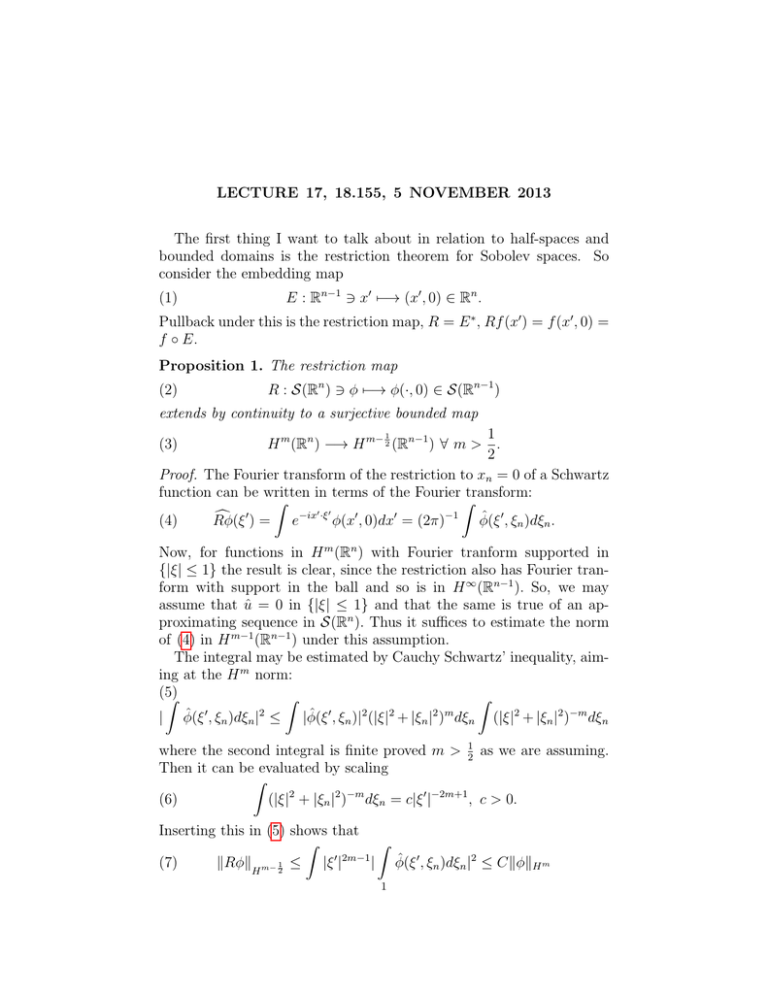
LECTURE 17, 18.155, 5 NOVEMBER 2013
The first thing I want to talk about in relation to half-spaces and
bounded domains is the restriction theorem for Sobolev spaces. So
consider the embedding map
E : Rn−1 3 x0 7−→ (x0 , 0) ∈ Rn .
(1)
Pullback under this is the restriction map, R = E ∗ , Rf (x0 ) = f (x0 , 0) =
f ◦ E.
Proposition 1. The restriction map
(2)
R : S(Rn ) 3 φ 7−→ φ(·, 0) ∈ S(Rn−1 )
extends by continuity to a surjective bounded map
1
1
H m (Rn ) −→ H m− 2 (Rn−1 ) ∀ m > .
2
Proof. The Fourier transform of the restriction to xn = 0 of a Schwartz
function can be written in terms of the Fourier transform:
Z
Z
0
−ix0 ·ξ 0
0
0
−1
c
(4)
Rφ(ξ ) = e
φ(x , 0)dx = (2π)
φ̂(ξ 0 , ξn )dξn .
(3)
Now, for functions in H m (Rn ) with Fourier tranform supported in
{|ξ| ≤ 1} the result is clear, since the restriction also has Fourier tranform with support in the ball and so is in H ∞ (Rn−1 ). So, we may
assume that û = 0 in {|ξ| ≤ 1} and that the same is true of an approximating sequence in S(Rn ). Thus it suffices to estimate the norm
of (4) in H m−1 (Rn−1 ) under this assumption.
The integral may be estimated by Cauchy Schwartz’ inequality, aiming at the H m norm:
(5)
Z
Z
Z
|
φ̂(ξ 0 , ξn )dξn |2 ≤
|φ̂(ξ 0 , ξn )|2 (|ξ|2 + |ξn |2 )m dξn
(|ξ|2 + |ξn |2 )−m dξn
where the second integral is finite proved m > 21 as we are assuming.
Then it can be evaluated by scaling
Z
(6)
(|ξ|2 + |ξn |2 )−m dξn = c|ξ 0 |−2m+1 , c > 0.
Inserting this in (5) shows that
Z
Z
0 2m−1
(7)
kRφkH m− 21 ≤ |ξ |
| φ̂(ξ 0 , ξn )dξn |2 ≤ CkφkH m
1
2
LECTURE 17, 18.155, 5 NOVEMBER 2013
using the support property of the Fourier tranform. This proves (3).
For the converse we will construct a right inverse to R. If v ∈
m− 21
H
(Rn−1 ) then
Z
(8)
(1 + |ξ 0 |2 )2m−1 |v̂(ξ 0 )|2 dξ 0 < ∞
Rn−1
and all we need to do is to construct w ∈ L2 (Rn ) with
Z
Z
2 2m
2
0
−1
(1 + |ξ| ) |w(ξ)| dξ < ∞, v(ξ ) = (2π)
w(ξ 0 , ξn )dξn .
Rn
R
Choose 0 ≤ φ ∈ Cc∞ (R) with φ = 1. For part of v̂ supported in
|ξ 0 | ≤ 2π such an extension is given by
w(ξ 0 , ξ) = φ(ξn )χ{|ξ0 |≤1} v̂(ξ 0 )
since this is in H ∞ (Rn ). So, really just for notation convenience, we
can assume that v̂(ξ 0 ) = 0 in |ξ 0 | ≤ 1. Then we use the same idea, but
‘spread the support’:
w(ξ 0 , ξn ) = φ(
(9)
ξn 0 −1 0
)|ξ | v̂(ξ ).
|ξ 0 |
Then
(10)
Z
Z
ξn
w(ξ , ξn )dξn = |ξ | v̂(ξ ) φ( 0 )dξn = v̂(ξ 0 ),
|ξ |
R
Z
Z
Z
ξn
|v̂(ξ 0 )|2 (|ξn |2 + |ξ 0 |2 )m |ξ 0 |−2 φ( 0 )|2 dξn dξ 0
|ξ|2m |w(ξ 0 , ξn )|2 dξn dξ 0 =
|ξ |
Rn−1
R
Rn
0
0 −1
0
where the inner integral is actually a constant multiple of |ξ 0 |2m−1 . We do not actually need m > 21 to find a right inverse in the last
1
part of the argument – even for m ≤ 12 if v ∈ H m− 2 (Rn−1 ) there is
a distribution u ∈ H m (Rn ) which happens to have the property that
u(·, xn ) is continuous in xn with values in distributions, which restricts
to v at xn = 0. If I have some time later I will discuss this sort of thing
a bit more.
The remainder of this lecture is reconstructed after the event.
A diffeomorphism between open sets, U, U 0 ⊂ Rn , is a smooth map
with a smooth two-sided inverse, F : U −→ U 0 , G : U 0 −→ U, F (x) =
(f1 , . . . , fn x), G(x) = (g1 (x), . . . , gn (x)) with fi ∈ C ∞ (U ), gi ∈ C ∞ (U 0 )
(real-valued of course) and
(11)
F (G(y)) = y ∀ y ∈ U 0 , G(F (x)) = x ∀ x ∈ U.
LECTURE 17, 18.155, 5 NOVEMBER 2013
3
For any smooth map, the pull-back operation is defined by composition:
(12)
F ∗ : C ∞ (U 0 ) −→ C ∞ (U ), F ∗ f (x) = f (F (x)).
Then F is a diffeomorphism if and only if (12) is a bijection – since the
components of G are the functions which pull-back to the coordinate
functions on U.
The tangent space of Rn at a pont p may be defined as the space of
derivations of C ∞ (O) for any open O 3 p, the linear maps
(13) Tp Rn = {δ : C ∞ (O) −→ C, s.t. δ(f g) = f (p)δ(g) + g(p)δ(f )}.
Such a derivation if just a sum of the basic derivations
(14)
∂i : C ∞ (O) 3 f 7−→
X
∂f
(p), δ =
ci ∂ i .
∂xi
i
Thus the standard coordinates give a natural trivialization Tp Rn = Rn .
If F : U −→ U 0 is smooth then its differential at p is
(15)
F∗ : Tp Rn −→ TF (p) Rn , F∗ (δ) = δ 0 , δ 0 : C ∞ (U 0 ) −→ R, δ 0 (g) = δ(F ∗ g).
Clearly as a map in terms of the coordinate trivialization this is given
by the Jacobian matrix
(16)
F∗ (∂i (p)) =
X ∂Fj
j
∂xi
(p)∂j (f (p)).
If F is a diffeomorphism, then F∗ must be invertible at each point,
with inverse G∗ (f (p)). Conversely, the inverse function theorem implies that if F : O −→ Rn is smooth and F∗ (p) is invertible then
F : B(p, ) −→ F (B(p, )) is a diffeomorphism of open sets for > 0
small enough.
Now, if F : U −→ U 0 is a diffeomorphism then, not only does (12)
hold, but also
(17)
F ∗ : Cc∞ (U 0 ) −→ C ∞ (U )
is an isomorphism, since F maps compact subsets of U onto (all) compact subsets of U 0 . These two spaces are dense in the distribution spaces
so it makes sense to claim:
4
LECTURE 17, 18.155, 5 NOVEMBER 2013
Proposition 2. For any diffeomorphism F : U −→ U 0 . the maps (17)
and (12) extend by continuity to isomorphisms
m
m
F ∗ : Hloc
(U 0 ) −→ Hloc
(U ),
(18)
F ∗ : Hcm (U 0 ) −→ Hcm (U ) ∀ m,
F ∗ : C −∞ (U 0 ) −→ C −∞ (U ),
F ∗ : Cc−∞ (U 0 ) −→ Cc−∞ (U ).
Proof. We need first to recall the behaviour of integrable functions
under diffeomorphisms. If f ∈ L1c (U 0 ) then indeed, F ∗ f ∈ L1c (U ), and
the integrals are related by
Z
Z
∂Fi
∗
f, JF = | det(
F f JF =
(19)
)|.
∂xj
U0
U
In particular there is no sign change in the Lebesgue integral if one
reverses one of the variables.
Perhaps I should recall a little where (19) comes from, but it is of
course a very standard formula.
This immediately extends to L2 since a function u ∈ L2c (U 0 ) is just
one such that u, |u|2 ∈ L1c (U 0 ). This gives the second result in (18) for
m = 0.
Continuing with this case, consider 0 < m < 1. Since we are looking
at functions with compact support, u ∈ Hcm (U 0 ) then means that u ∈
L2c (U 0 ) and
Z
|u(x) − u(y)|2
dxdy < ∞.
n+2m
U 0 ×U 0 |x − y|
In fact, if δ > 0 then for an L2 function of compact support, () is
equivalent to
Z
|u(x) − u(y)|2
(20)
dxdy < ∞.
n+2m
U 0 ×U 0 , |x−y|<δ |x − y|
Indeed, the integral over |x − y| ≥ δ can be bounded by twice
Z
|u(x)|2
(21)
2
dxdy
n+2m
U 0 ×U 0 , |x−y|>δ |x − y|
which is indeed finite. So, given u ∈ Hcm (U 0 ) to show that F ∗ u ∈
Hcm (U ) it remains only to show that
Z
|u(F (x)) − u(F (y))|2
(22)
dxdy < ∞
|x − y|n+2m
K×K, |x−y|<δ
LECTURE 17, 18.155, 5 NOVEMBER 2013
5
where K b U. Using Taylor’s formula
∂F
(23) F (x)−F (y) = (x−y)·
+E, |E(x, y)| ≤ C|x−y|2 in |x−y| ≤ δ
∂x
uniformly over x ∈ K if δ > 0 is small enough. Since the Jacobian
matrix is invertible it follows that
|x − y| ≥ c|F (x) − F (y)| on K × K ∩ {|x − y| < δ}.
Thus instead of (22) it is enough to show that
Z
|u(F (x)) − u(F (y))|2
(24)
Jf (x)Jf (y)dxdy < ∞
n+2m
K×K, |x−y|<δ |F (x) − F (y)|
since the Jacobian factors are strictly positive. Now we simply change
variable as in (19) and the finiteness follows from ().
Now suppose that k ≤ m < k + 1 for k ∈ N. We can proceed by
induction over k using the fact that u ∈ Hcm (U 0 ) is equivalent to
u, Di u ∈ Hcm−1 (U 0 ), i = 1, . . . , n.
Thus, by the inductive hypothesis, it follows that F ∗ u, F ∗ (Di u) ∈
Hcm−1 (U ). However, the behaviour of derivations is simple, in that
n
X
(25)
Di F ∗ u =
aij (x)F ∗ (Dj u)
j=1
where the coefficients are again essentially the Jacobian matrix, in any
case are smooth. Since we know the compactly-supported Sobolev
spaces are modules over C ∞ (U ), we conclude that u ∈ Hcm (U ) and the
result follows for all m ≥ 0.
The proof for m < 0 is similar, since if −k < m < −k + 1, k ∈ N,
then u ∈ Hcm (U 0 ) is equivalent to being able to decompose it as a sum
n
X
u = v0 +
Di vi , vp ∈ Hcm+1 (U 0 ).
i=1
The same sort of inductive argument therefore applies.
Thus we have proved the second statement in (18). The last is a
consequence since each compactly supported distribution is in some
Sobolev space. The first and third identifications then follow from the
second and last by a suitable localization argument.
